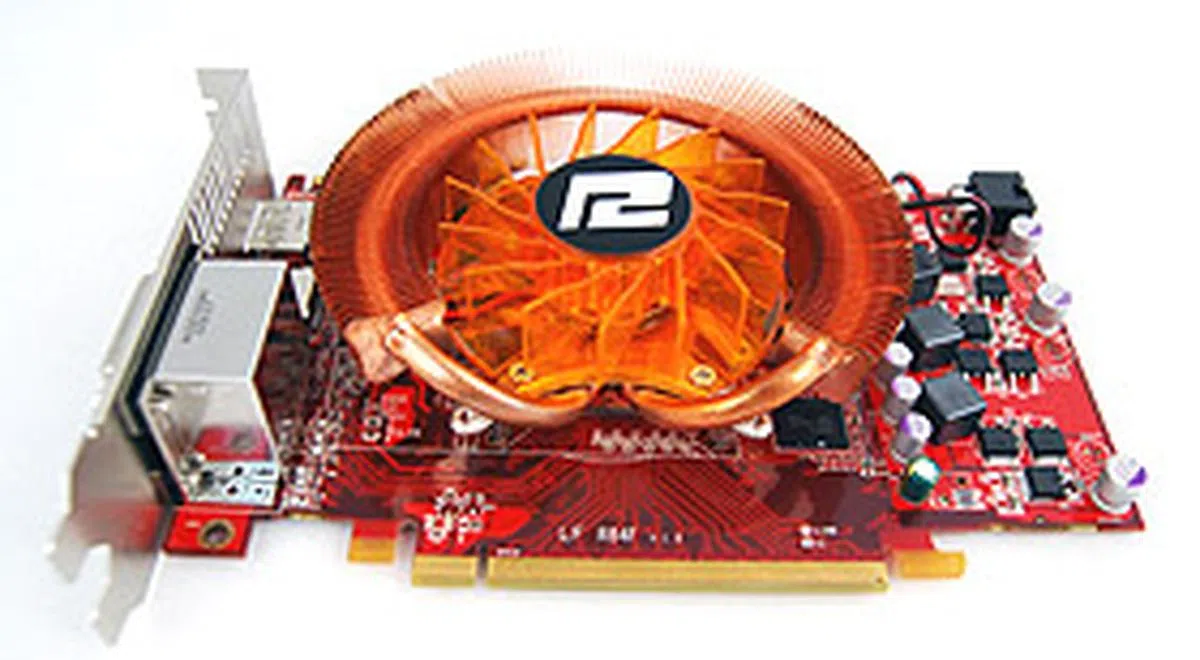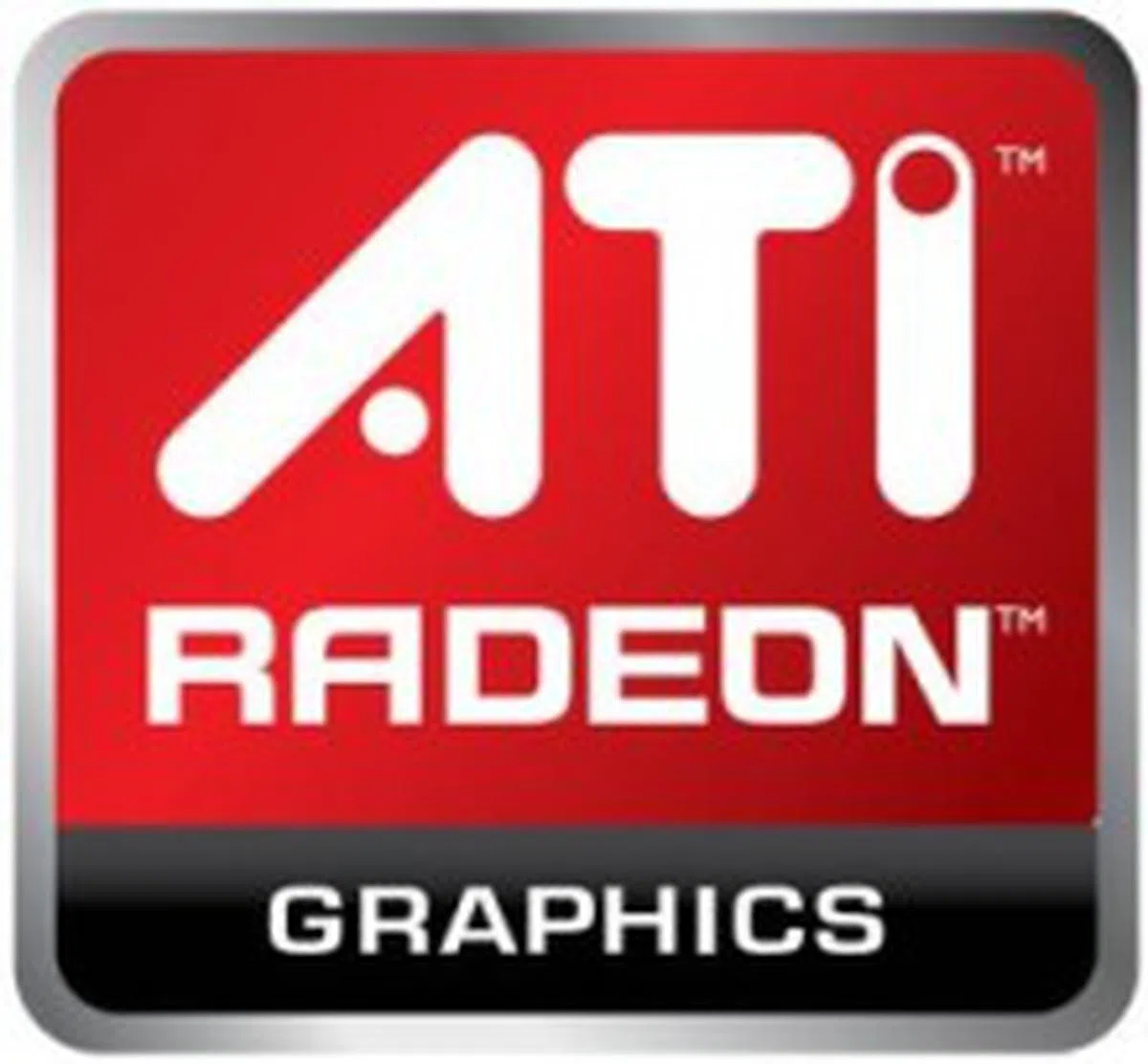ATI Radeon HD 5750 - More Mainstream Goodness
Hot on the heels of the Radeon HD 5870, HD 5850 and HD 5770 comes the HD 5750. Despite packing the least processing horsepower amongst ATI's current Evergreen line-up, it has an attractive price that cannot be ignored. We see if it has the performance to match up with the PowerColor PCS HD 5750 Premium Edition.
By Kenny Yeo -
Mainstream Offensive
What else can be said about ATI's newest Evergreen cards that haven't already been said? In a short span of a month, ATI has rolled out not just one, not two, but four new cards. We've already covered the hyper fast Radeon HD 5870, its less powerful sibling the HD 5850, and also the HD 5770. Today, we are turning our attention to the Radeon HD 5750, the HD 5770's little brother.
The Radeon HD 5750 follows ATI tradition in that it is essentially a stripped down version of the single GPU (Cypress XT) found in the Radeon HD 5870. The chip found in the HD 5750 has been codenamed Juniper LE and it features a mere 720 stream processors, 36 texture mapping units and 16 raster operator units. This is comparable to the HD 5770's 800 stream processors, 40 texture mapping units and 16 raster operator units, but no where close to what the HD 5870 packs.
Additionally, like the Radeon HD 5770, the Radeon HD 5750 was given only a 128-bit wide memory interface, which would certainly hamper performance. And where clock speeds are concerned, the core of the Radeon HD 5750 is running at 700MHz, whereas the memory is clocked at 4600MHz DDR, which is notably lower than the HD 5770's core clock speeds of 850MHz and memory clock speeds of 4800MHz DDR. While the HD 5750 might have less stream processors, texture mapping units and lower clock speeds, ATI says the chip is still capable of pushing out 1.008 teraFLOPs of pure compute power, which is a smidge more than what the previous generation Radeon HD 4850 could manage. Price points too seem to be in that ballpark with the new Radeon HD 5750 SKU pegged at a recommended price of US$129. Other specs and price comparisons are as documented in the table at the bottom.

Our Radeon HD 5750 comes courtesy of PowerColor. This is the PowerColor PCS HD 5750 Premium Edition, which comes with a custom cooler from cooling specialists ZEROtherm and also a redeemable copy of Dirt 2.
With its stripped down core and lower clock speeds, it will be intriguing to see how the Radeon HD 5750 performs against the other Evergreen series of cards, its predecessors, and against the competition from NVIDIA. But first, a quick look at its GPU-Z screenshot and how it stacks up against the competition.

Model | ATI Radeon HD 5750 1GB | ATI Radeon HD 5770 1GB | ATI Radeon HD 4870 512MB | ATI Radeon HD 4850 512MB | NVIDIA GeForce GTX 260+ 896MB | NVIDIA GeForce GTS 250 1GB | NVIDIA GeForce 9800 GT 512MB |
Core Code | Juniper LE | Juniper XT | RV770 | RV770 | GT200 | G92 | G92 |
Transistor Count | 1040 million | 1040 million | 965 million | 965 million | 1400 million | 754 million | 754 million |
Manufacturing Process | 40nm | 40nm | 55nm | 55nm | 65nm | 55nm | 65 / 55nm |
Core Clock | 700MHz | 850MHz | 750MHz | 625MHz | 576MHz | 738MHz | 600MHz |
Stream Processors | 720 Stream processing units | 800 Stream processing units | 800 Stream processing units | 800 Stream processing units | 216 Stream Processors | 128 Stream Processors | 112 Stream Processors |
Stream Processor Clock | 700MHz | 850MHz | 750MHz | 625MHz | 1242MHz | 1836MHz | 1500MHz |
Texture Mapping Units (TMU) or Texture Filtering (TF) units | 36 | 40 | 40 | 40 | 72 | 64 | 56 |
Raster Operator units (ROP) | 16 | 16 | 16 | 16 | 28 | 16 | 16 |
Memory Clock | 4600MHz GDDR5 | 4800MHz GDDR5 | 3600MHz GDDR5 | 2000MHz GDDR3 | 1998MHz GDDR3 | 2200MHz GDDR3 | 1800MHz GDDR3 |
DDR Memory Bus | 128-bit | 128-bit | 256-bit | 256-bit | 448-bit | 256-bit | 256-bit |
Memory Bandwidth | 73.6GB/s | 76.8GB/s | 115.2GB/s | 64GB/s | 111.9GB/s | 70.4GB/s | 57.6GB/s |
PCI Express Interface | PCIe ver 2.0 x16 | PCIe ver 2.0 x16 | PCIe ver 2.0 x16 | PCIe ver 2.0 x16 | PCIe ver 2.0 x16 | PCie ver 2.0 x16 | PCIe ver 2.0 x16 |
Molex Power Connectors | 1 x 6-pin | 1 x 6-pin | 2 x 6-pin | 6-pin | 2 x 6-pin | 1 x 6-pin | 6-pin |
Multi GPU Technology | CrossFireX | CrossFireX | CrossFireX | CrossFireX | SLI | SLI | SLI |
DVI Output Support | 2 x Dual-Link | 2 x Dual-Link | 2 x Dual-Link | 2 x Dual-Link | 2 x Dual-Link | 2 x Dual-Link | 2 x Dual Link |
HDCP Output Support | Yes | Yes | Yes | Yes | Yes | Yes | Yes |
Street Price | ~US$129 | ~US$159 | ~US$150 | ~US$100 | ~US$200 | ~US$120 | ~US$100 |
The PowerColor PCS HD 5750 Premium Edition
Most vendors are releasing their Radeon HD 5750 cards with custom coolers and PowerColor is no different. As the PCS moniker suggest, the PowerColor PCS HD 5750 Premium Edition (henceforth referred to as the PowerColor PCS 5750 PE) comes with a custom cooler and its from none other than ZEROtherm. The ZEROtherm GX815 VGA cooler that is found on this card is one of the most extreme we have seen, with more than one hundred copper cooling fins to help dissipate heat. Hopefully this will translate to low operating temperatures which we'll find out later. If you are worried about noise, we are happy to report that the ZEROtherm cooler runs smooth and quiet.
Despite the aggressive cooler, the PowerColor PCS 5750 PE runs at ATI's reference speeds, which is a tad disappointing.

The blood red PCB and copper orange custom cooler of the PowerColor PCS HD 5750 Premium Edition makes for a visually arresting card.

Here's a closer look at the ZEROtherm GX815 VGA cooler. Two heat pipes draw heat from the copper heatsink base, which is then dissipated via the cooler's 120 copper fins.

ATI's Eyefinity is offered on the little Radeon HD 5750 as well, which means you can power up to three monitors using the DisplayPort, and any combination of DVI and HDMI ports.

Up to four Radeon HD 5750 cards can be connected in CrossFireX configuration for some serious graphics crunching power.

A single 6-pin PCIe power connector is required, as well as a PSU rated for at least 450W.

The PowerColor PCS HD 5750 Premium Edition is using high-end Hynix memory capable of 7 GigaTransfers/second. These memory chips are also more power-efficient compared to the older ones used on previous generation Radeon HD 4000 series cards.
Test Setup
The tests will be conducted on our usual Windows Vista, Intel X38 based system:
Windows Vista SP1 Test System:
- Intel Core 2 Extreme QX6850 (3.00GHz)
- Gigabyte X38T-DQ6 motherboard
- 2 x 1GB DDR3-1333 Aeneon memory in dual channel mode
- Seagate 7200.10 200GB SATA hard drive
- Windows Vista Ultimate with SP1
Judging from the specifications of the Radeon HD 5850, we think its performance would be somewhere in between the Radeon HD 5870 and the older Radeon HD 4890. But the more pressing question is how much slower than the HD 5870 would it be? We'll have also thrown in NVIDIA's GT200 class of cards to see how the HD 5850 stacks up against NVIDIA's finest.
Here's the complete list of cards tested and the driver versions used:
- HIS Radeon HD 5850 1GB GDDR5 (Beta 8.65)
- ATI Radeon HD 5870 1GB GDDR5 (Beta 8.66)
- ATI Radeon HD 5770 1GB GDDR5 (Beta 8.66 RC9)
- ATI Radeon HD 4870 X2 2GB GDDR5 (Catalyst 9.8)
- ATI Radeon HD 4890 1GB GDDR5 (Catalyst 9.8)
- NVIDIA GeForce GTX 295 1792MB GDDR3 (ForceWare 190.62)
- NVIDIA GeForce GTX 285 1GB GDDR3 (ForceWare 190.62)
- NVIDIA GeForce GTX 275 896MB GDDR3 (ForceWare 190.62)
- NVIDIA GeForce GTX 260+ 896MB GDDr3 (ForceWare 190.62)
And the cards were tested using the following benchmarks:
- Futuremark 3DMark06
- Futuremark 3DMark Vantage
- Crysis Warhead
- Far Cry 2
- Dawn of War 2
3DMark06 Results
We begin with the widely used 3DMark06 benchmark, and the PowerColor PCS 5750 PE performed decently well, posting scores that were about 10% lower than the more powerful Radeon HD 5770. It also did significantly better than the older Radeon HD 4850. Against the NVIDIA cards, it was comprehensively beaten by the GeForce GTX 260+, but was more than a match for the GeForce GTS 250. So far sounds good.


3DMark Vantage
Moving on to 3DMark Vantage, it was a slightly different story. The Radeon HD 5770 maintained its lead over the PowerColor PCS 5750 PE, but this time, the PowerColor card was only on par with the Radeon HD 4850. That said, it did record slightly better scores than the GeForce GTS 250.

Crysis Warhead & Far Cry 2 Results
As expected, the PowerColor PCS 5750 PE managed frame rates that were comparable to the Radeon HD 4850, although it did come out slightly faster. It also performed similarly to NVIDIA's GeForce GTS 250. However, the frame rates most of these cards were churning tell us that despite the new technology, Crysis Warhead on Enthusiast settings remains to be something only the most powerful graphics cards could hope to handle.


Despite the ultra-high settings on Far Cry 2, the new PowerColor PCS 5750 PE performed reasonably well, putting in decent and playable frame rates on the less intensive settings. It blitzed the Radeon HD 4850 thanks to its larger 1GB frame buffer, which is always useful when anti-aliasing is enabled. Again, we can see that it is almost comparable with the GeForce GTS 250.


Dawn of War 2 Results
Dawn of War 2 proved tricky for the PowerColor PCS 5750 PE as it performed significantly poorer than the Radeon HD 4850. However, it continued to maintain parity against the GeForce GTS 250. We think its poor performance could be due to the fact that the drivers the PowerColor card is running on is still in Beta. Hopefully once these new Evergreen cards receive proper drivers, performance on Dawn of War 2 will improve.

Temperature
Considering that the PowerColor PCS 5750 PE was using a custom ZEROtherm GX815 cooler, we were not surprised to see that its operating temperature was only 62 degrees Celsius. In fact, if you consider the 68 degrees Celsius for the Radeon HD 5770 was tested using only ATI's reference cooler, 62 degrees Celsius is actually nothing to shout about. However, since this is our first experience of an Evergreen card running on a custom cooler, it is possible that this points to the efficiency of ATI's stock cooler design. We can only tell for sure once more Evergreen cards with custom coolers start making their way into our labs.
Last but not least for this segment, the PowerColor PCS 5750 PE is way cooler than the stock Radeon HD 4850 graphics card when considering that both are in the same performance and price segment.

Power Consumption
Great power efficiency is the hallmark of an Evergreen card and the PowerColor PCS 5750 PE didn't disappoint, clocking the lowest figures in this category. Its power consumption figures were lower even than a GeForce 9800 GT, which is certainly impressive if you consider just how much more powerful the Radeon HD 5700 series cards are.

Overclocking
The PowerColor PCS 5750 PE was a willing overclocker as we managed to push it up to 830MHz at the core and a staggering 5000MHz DDR at the memory using the built-in ATI Overdrive utility. This meant a 130MHz and 400MHz DDR bump in core and memory clock speeds respectively. This gave us 3948 3DMarks, which translates to an improvement of about 16%.

Unfulfilled Potential
This is ATI's fourth card in the span of a month and although it is the least powerful Evergreen card we've seen thus far, its performance suggests that it will suffice for most mainstream and casual gamers. It matches the older Radeon HD 4850 and also the GeForce GTS 250, while using less power and offering more features (although whether it'll have enough mojo to drive three monitors for gaming is suspect).
Like the Radeon HD 5770 before it, the Radeon HD 5750 doesn't make new grounds. ATI has suggested a retail price of US$109 to US$129, which means it costs just about as much as the last-generation Radeon HD 4850 and the GeForce GTS 250. As such, the HD 5750 feels more like an update to the older HD 4850. DirectX 11 support, EyeFinity and lower power consumption figures are a boon to be sure, but given that NVIDIA is still a long way from rolling out their Fermi cards, ATI has the luxury of being first in the market and as such has priced the new HD 5750 practically rather than attractively. A lower price point would certainly make the card more enticing, but that looks like something we'll only see in the future after the NVIDIA's Fermi cards are ready.
In our local market, the Radeon HD 5750 cards are going for around S$200 to S$220, which is about what you would pay for a 1GB variant of the Radeon HD 4850. Against the GeForce GTS 250, however, the HD 5750 is much better value since the 1GB variants of the GTS 250 are commanding around S$250.

Offering similar performance to the older Radeon HD 4850, the new Radeon HD 5750 can be best described as an update of the former but with better efficiency, DirectX 11 support and EyeFinity.
In the case of the PowerColor PCS 5750 PE, we've been told that its recommended retail price is US$139, which is a tad more, but wholly justifiable considering the custom cooler from ZEROtherm and the bundled Dirt 2 game bundle.
In summary, the Radeon HD 5750 is a great chip offering great performance and features with a very low power draw, but without pressure from NVIDIA, ATI is taking it easy and hasn't priced it as attractive as they could have. We reckon that a price drop would make the Radeon HD 5750 irresistible to those still sitting on the fence.
 |  |
 |  |
Our articles may contain affiliate links. If you buy through these links, we may earn a small commission.